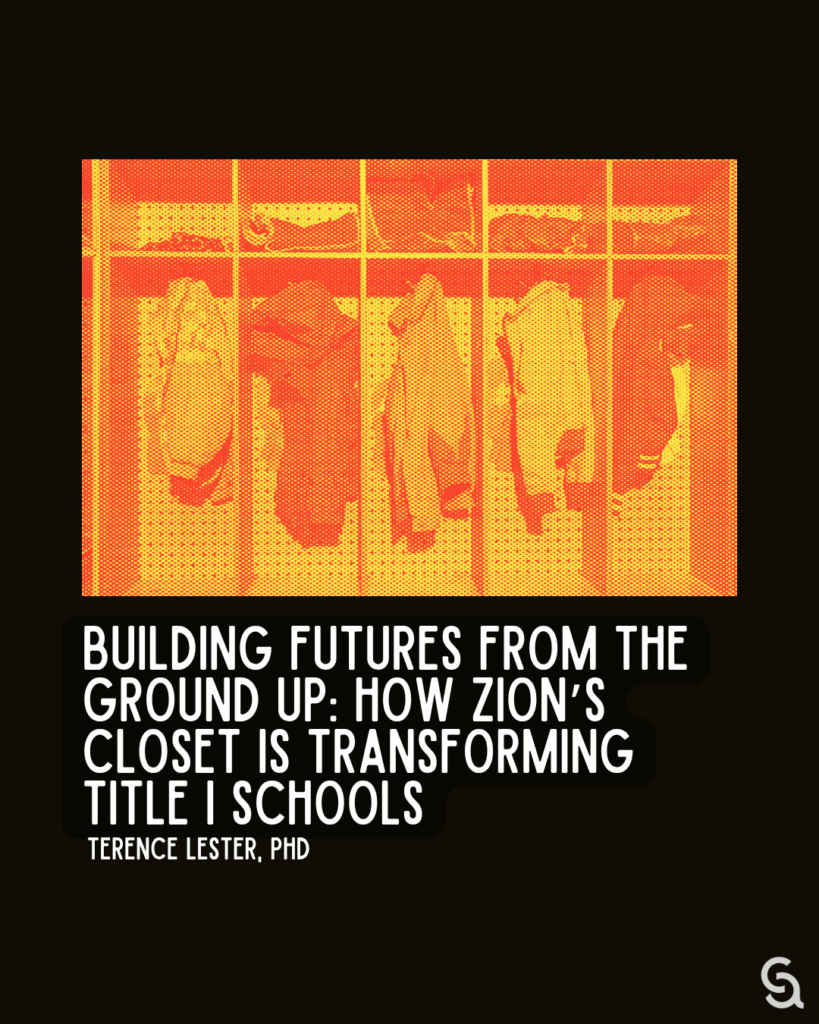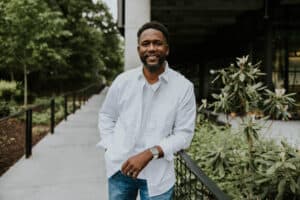 (Editor’s note: This is Part 3 of a 4-part series on economic injustice. You can find Part 1 here and Part 2 here. In this post, Dr. Terence Lester shows how compassion can grow into systemic change.)
(Editor’s note: This is Part 3 of a 4-part series on economic injustice. You can find Part 1 here and Part 2 here. In this post, Dr. Terence Lester shows how compassion can grow into systemic change.)
____
In 2016, with the support of my family and board of directors, I launched a campaign called MAP16 (March Against Poverty) to walk from Atlanta, GA, to the White House to raise awareness about homelessness in the U.S. At that point, I was growing tired of political discourse that excluded the terms poverty and homelessness. Even today, although we are beginning to hear about homelessness more often, it is usually mentioned only from a punitive standpoint.
I launched the campaign in partnership with the Southern Christian Leadership Conference (SCLC) at its national headquarters in Atlanta, the same organization founded by Martin Luther King Jr. The journey took over 800 miles and 2 months to complete. I walked through multiple states, using digital technology to bring attention to the issue. This was turned into a documentary called Voiceless [1] that chronicled my journey.
Around that time, my daughter Zion was in second grade. That is when she began to understand what compassion, advocacy, and even community service look like. Some days, she would bring newspapers to school, telling her classmates about the walking journey. Instead of setting the newspaper aside, her teacher took the opportunity to educate the class on homelessness.
Eventually, Zion launched a campaign to raise awareness and collect spare change alongside other students. Her classroom made posters, rallied peers, and brought in teachers. Together, they raised $52 worth of change. That might seem small, but it was significant. Students were impacted, made aware, and even supported, as some in the class were experiencing homelessness themselves.
As a father, I was deeply moved by my daughter’s growing compassion. That simple act planted seeds that years later became the inspiration for our children’s book, Zion Learns to See, which tells the story of how Zion learned—from going to work with me every week at Love Beyond Walls—the importance of humanizing, honoring, and showing compassion to those who may not have housing. We wanted children to understand that age does not matter when it comes to service—anyone can make a difference.
After the book’s release, Zion and I began to dream about launching another initiative that could directly impact students in real time, especially those who might be unhoused, while also bringing communities together. Families, businesses, local political leaders, school board members, churches, and educators could unite to resource schools when funding fell short.
That dream grew into something much larger: Zion’s Closet.
Zion’s Closet is a program through Love Beyond Walls to retrofit classrooms into community resource centers with wraparound services that support educators, counselors, and social workers as they show up for students needing resources. We mobilize volunteers to enter Title I schools and transform classrooms into fully stocked community hubs inside the school. The goal is simple but deeply impactful, because students navigating poverty and housing instability have their needs met in real time. Their dignity is affirmed daily through social and emotional support.
What makes Zion’s Closet distinct is that it goes beyond filling immediate needs and gaps. It brings together local businesses, political leaders, school board members, churches, and community organizations—not only to stock resources like laundry facilities, computer stations, refrigeration for healthy food, uniforms, and hygiene kits, but also to engage in meaningful dialogue about systemic change.
Each Zion’s Closet is designed in direct collaboration with principals, social workers, and counselors so that resources align with the school’s unique needs. Families receive emotional support in spaces where parents can apply for jobs, support social-emotional learning, wash clothes, and participate without shame.
This matters, because many school social workers manage multiple campuses and face enormous caseloads. They often spend hours searching for solutions outside the school only to encounter resource shortages. Zion’s Closet addresses this by bringing supports directly into the school environment with direct impact among students and families.
From the beginning, we knew we had to move beyond one-time book-bag drives. Those are helpful, but they are not enough. A year-round closet and resource center embedded in the school means that when a teacher notices a student struggling because of worn-out shoes or stained clothes, supplies are immediately available, and it helps to create dialogue in the school among the helping professionals about what the county or school system needs to do to address these concerns.
That moment not only restores dignity and helps students reengage with instructional learning, it also forces us to ask structural questions:
Why are children arriving at school in these conditions? What must we change as a community to address the roots of the issue? How are funding cuts impacting students?
Although we are working with Title I elementary schools right now, it’s important for people to understand what Title I actually represents for students and families. Title I schools serve a high percentage of students from communities that have been historically underfunded and marginalized.
These schools carry double the weight of other schools. First, they are expected to meet the greatest needs. Second, they must do so while operating with fewer resources than wealthier districts that have long benefited from structural advantages, such as being situated in neighborhoods with greater economic investment and access to resources.
Here’s the reality that we must consider that many do not understand: Districts with the lowest incomes in the United States receive about 5 percent less state and local funding per student—roughly $800 less—than wealthier districts. Schools serving the highest proportions of students of color often face even larger gaps, receiving up to $2,700 less per student.[2]
Title I is designed to step in here, and it currently supports over 26 million students across nearly 90 percent of U.S. school districts, including almost 60 percent of all public schools.[3] This data is not just hard to digest, it is also a moral and political statement about where this country has chosen to place its resources—and where it continues to fall short.
This is why our presence in these schools matters. The presence of all of us. It is not just about handing out supplies. It is about naming inequity for what it is, standing in solidarity with students and families, and reminding the larger community that these schools, these students, and these future scholars deserve more than survival. They deserve full and equitable investment.
The McKinney-Vento Homeless Assistance Act was designed to provide protections for students experiencing housing instability, ensuring they could remain enrolled in school, access transportation, and receive support services.[4] Yet underfunding and uneven enforcement have weakened its impact.
In the 2022–2023 school year, 1.37 million public school students were identified as experiencing homelessness, a 14 percent increase over the previous year.[5] These students are disproportionately Black, Latinx, and Native youth, and without fully resourced protections, they fall through the cracks.
When community spaces like Zion’s Closet bring resources directly into Title I schools, we are saying to every student, You are seen, you belong here, and you deserve the same dignity and opportunities as anyone else. It reminds us that while laws like McKinney-Vento provide a framework, lived justice requires presence, proximity, and real support inside the very schools where inequities show up daily.
Zion’s Closet not only provides immediate support but also points us back to these issues that need to be addressed. Why are Title I schools chronically underfunded? Why is McKinney-Vento not fully resourced? Why must children rely on in-school closets or community hubs for basic needs in the first place?
As I reflect on Zion’s journey, from bringing newspapers to her second-grade class, to sparking a campaign of children donating change, to co-authoring Zion Learns to See, to helping inspire Zion’s Closet, I see a thread of possibility and hope to continue organizing to display compassionate acts while also bringing people together to create change. Because change begins with small acts, but it cannot end there.
References:
[1] Voiceless: A Documentary on Systemic Poverty, directed by Terence Lester, Vimeo video, duration unknown, accessed September 8, 2025.
[2] Education Trust. Equal Is Not Good Enough: Funding Gaps (December 2022), accessed September 2025.
[3] Title I At-A-Glance, All4Ed, accessed September 8, 2025, https://all4ed.org/publication/title-i-at-a-glance/.
[4] National Center for Homeless Education. McKinney-Vento Act at a Glance. Greensboro, NC: University of North Carolina at Greensboro, 2023.
[5] U.S. Department of Education, Student Homelessness in America: School Years 2020-21 to 2022-23, Office of Elementary and Secondary Education, accessed September 2025.
 Dr. Terence Lester is a storyteller, public scholar, community activist, and author. He founded Love Beyond Walls, a nonprofit committed to raising awareness about poverty and homelessness, and teaches public policy and social change at Simmons College of Kentucky. His latest book, From Dropout to Doctorate: Breaking the Chains of Educational Injustice (IVP, 2025), traces his journey from high school dropout to PhD and issues a bold call for equity. Through his life and writing, he uses narrative, policy insight, and faith to challenge systems that leave people invisible and to inspire practical change.
Dr. Terence Lester is a storyteller, public scholar, community activist, and author. He founded Love Beyond Walls, a nonprofit committed to raising awareness about poverty and homelessness, and teaches public policy and social change at Simmons College of Kentucky. His latest book, From Dropout to Doctorate: Breaking the Chains of Educational Injustice (IVP, 2025), traces his journey from high school dropout to PhD and issues a bold call for equity. Through his life and writing, he uses narrative, policy insight, and faith to challenge systems that leave people invisible and to inspire practical change.


